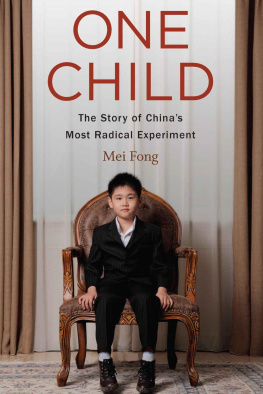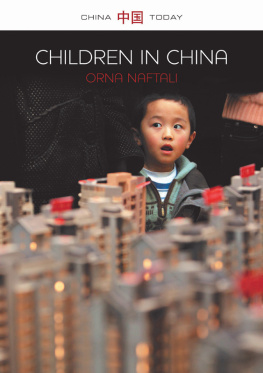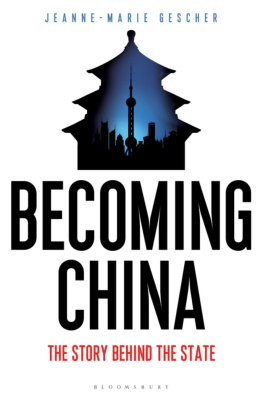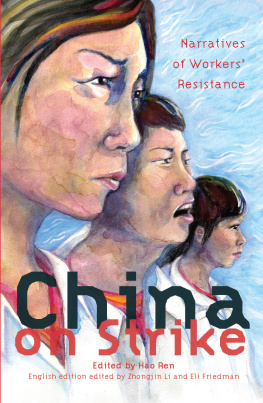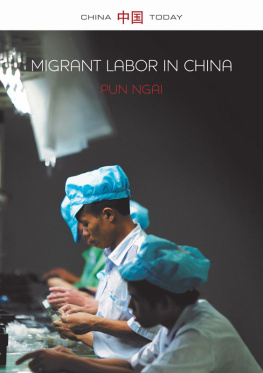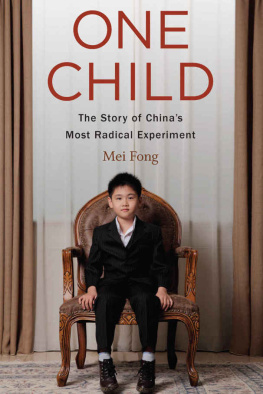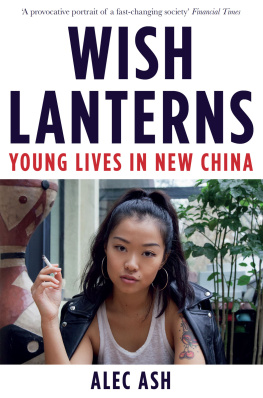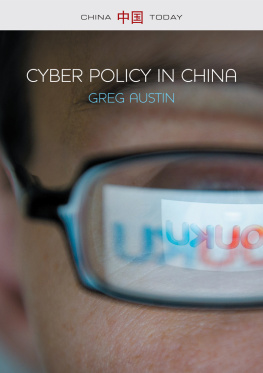Copyright 2016 by Mei Fong
All rights reserved
For information about permission to reproduce selections from this book, write to or to Permissions, Houghton Mifflin Harcourt Publishing Company, 3 Park Avenue, 19th Floor, New York, New York 10016.
www.hmhco.com
The Library of Congress has cataloged the print edition as follows:
Names: Fong, Mei, author.
Title: One child : the story of Chinas most radical experiment / Mei Fong.
Description: Boston : Houghton Mifflin Harcourt, 2016. | Includes bibliographical references and index.
Identifiers: LCCN 2015037254| ISBN 9780544275393 (hardcover) | ISBN 9780544276604 (ebook) | ISBN 9780544815582 (pbk. (international edition)) | ISBN 9780544815605 (trade paper)
Subjects: LCSH : ChinaPopulation policy. | Family planningGovernment policyChina. | Family sizeGovernment policyChina. | FamiliesChina. | ChinaSocial conditions2000 | ChinaSocial policy21st century.
Classification: LCC HB 3654. A 3 F 66 2016 | DDC 363.9/60951dc23
LC record available at http://lccn.loc.gov/2015037254
Cover photograph Alex Mares-Manton/Asia Images/Corbis
v2.1215
To anyone contemplating the cost of parenthood
Authors Note
Whenever it made grammatical sense, I have tried to make a distinction between China and Chinese, since one can be ethnically Chinese but not a citizen of the Peoples Republic of China.
In representing Chinese names, Ive usually placed the family name first, though there are exceptionsmine being one. Readers may also note that Ive used English translations for some Chinese namesfor example, Moon Lotusand not for others. Ive done so to help Western readers distinguish various Chinese characters in books, since unfortunately in Romanized script many Chinese names can sound alike. In some older interviews I conducted, I failed to get accurate translations of the subjects names at the time and do not venture to guess.
A last note on statistics. China sources such as Xinhua or the countrys Bureau of Statistics have been used as indicators but should not be taken as gospel. (Even Chinas Premier Li Keqiang reportedly said Chinas GDP figures are man-made.) The wise reader would assume that official numbers may be deflated when such figures have negative implications for Chinas prestigesuch as fatalities or pollution indicatorsand possibly inflated in cases where overstatement may benefit authoritiesfor example, GDP growth.
Prologue
In the midst of the Cold War, Chinas rocket scientists came up with an ambitious plan that had nothing to do with missiles, or space exploration, or weaponry of any kind.
It concerned babies.
On September 25, 1980, Chinas Communist Party unveiled this plan through an open letter that asked members to voluntarily limit their family size to one child. The request was, in truth, an order.
Thus began the one-child policy, the worlds most radical social experiment, which endured for thirty-five years and continues to shape how one in six people in this world are born, live, and die.
Like crash dieting, the one-child policy was begun for reasons that had merit. Chinas leadership argued the policy was a necessary step in its Herculean efforts to lift a population the size of the United States from abject poverty. But like crash dieting, the one-child policy employed radical means and aimed for quick results, causing a rash of negative side effects.
The excesses of the one-child policy, such as forced sterilizations and abortions, would eventually meet with global opprobrium. Balanced against this, however, is the worlds grudging admiration for Chinas soaring economic growth, a success partially credited to the one-child policy.
What we fail to understand is that Chinas rapid economic growth has had little to do with its population-planning curbs. Indeed, the policy is imperiling future growth because it rapidly created a population that is too old, too male, and, quite possibly, too few.
More people, not less, was one of the reasons for Chinas boom. The countrys rise as a manufacturing powerhouse could not have happened without abundant cheap labor from workers born during the 1960s70s baby boom, before the one-child policy was conceived.
To be sure, fewer births made investments in human capital more efficientless spreading out of educational resources, for example. Many economists, however, agree that Chinas rapid economic rise had more to do with Beijings moves to encourage foreign investment and private entrepreneurship than a quota on babies. Privatizing Chinas lumbering state-owned enterprises, for example, spurred private-sector growth until it accounted for as much as 70 percent of Chinas gross domestic product (GDP) by 2005. Arthur Kroeber, one of the most prolific and respected economists who specializes in China, said, Lets say China grew 10%; I would be surprised if more than 0.1% of this is due to the one-child policy.
Chinas vast cohort of workers is growing old. By 2050, one out of every four people in China will be over sixty-five. And the one-child policy has vastly shrunk the working population that must support and succor this aging army. In recent years China has made great strides in rolling out nationwide pension and health-care schemes, but the social safety net is far from adequate, and the leadership will have to do much more with much less time.
I started reporting on Chinas economic miracle in 2003 as a Wall Street Journal correspondent. I was on the factory beat, covering the workshop of the world. Every little city in southern Chinas Pearl River Delta defined itself by what it made: I made regular stops at Jeans City, Bra Town, and Dollar Store center, wrote stories about the worlds largest Christmas tree factory, and about a brassiere laboratory that birthed the Wonderbra.
Few envisioned a worker shortage then. But I was starting to hear stories about factory owners being forced to hike wages. Some resorted to offering previously unheard-of perks like TVs, badminton courts, and free condoms. Most economists at the time saw it as a short-term labor supply issue that would soon sort itself out. For how could you run out of workers in China?
As it turned out, the work force shrinkage happened faster than anticipated. The one-child policy sharply accelerated a drop in fertility. Chinas massive 800-million-person work forcelarger than Europes populationstarted to contract in 2012 and will continue doing so for years to come, driving up wages and contributing to global inflationary pressures.
After twenty years of below-replacement rates, China has officially moved to a two-child policy as of late 2015 to ease demographic pressures. It may be too little, too late. When Beijing loosened the policy slightly two years earlier, only about a tenth of eligible couples applied to have a second child, a take-up below even the most pessimistic projections. Many say its simply too costly and stressful to raise multiple offspring in modern-day China. In that sense, the one-child policy can be judged a success, for many Chinese have thoroughly internalized the mindset that the one-child household is the ideal.
If Beijing is unable to reverse this thinking, then somewhere in the decade between 2020 and 2030, Chinas population will peak and decline. By 2100, Chinas population may have declined to 1950 levels, about 500 million, a startling reversal for the worlds most populous nation. No other country has ever shed this much of its population without the aid of warfare or pestilence. And at the same time, the policys enforcement was occasionally vicious, bordering on inhumane in certain cases, and it encouraged a number of baleful side effects, from a potentially explosive gender imbalance to what is essentially a black market for adoptable infants.

